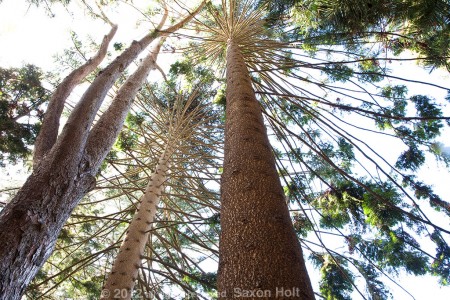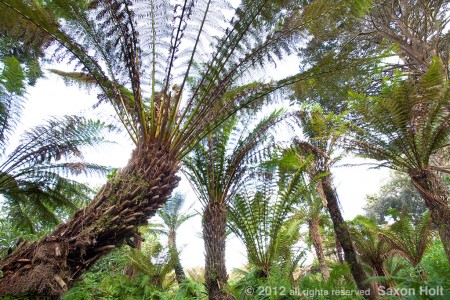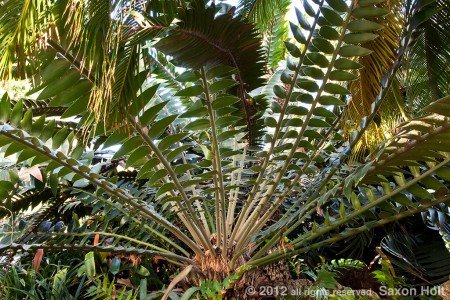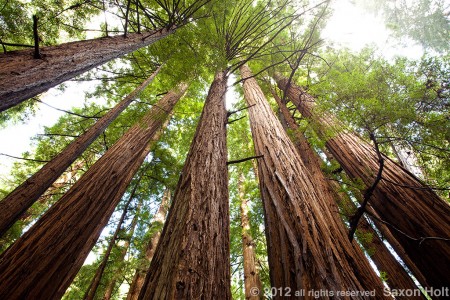 Sometimes we photographers get stuck. We are out looking for photos and just can’t seem to find anything special. Often, seeing the garden is just a matter of slowing down and thinking about what it is that excites us. Other times we just need to shake up our point of view.
Sometimes we photographers get stuck. We are out looking for photos and just can’t seem to find anything special. Often, seeing the garden is just a matter of slowing down and thinking about what it is that excites us. Other times we just need to shake up our point of view.
As you look around, try looking up, straight up, especially if you have trees. Photos underneath, looking up, give a sense of majesty. They force you and the viewer to re-think scale and dimension.
Recently I have been preparing for an exhibit of prehistoric plants at the San Francisco Conservatory of Flowers and looking for images that, when blown up 10 feet tall, will make the visitors feel they are enveloped in a new environment.
As I search for prehistoric plants (those dating before the evolution of flowers) such as the Norfolk Island Pine (Araucaria heterophylla) pictured above in Lotusland in Santa Barbara, I got a lot of experience (and neck strain) while looking up at trees. Here is a bit of what I learned.
First you really need a wide angle lens. Since I wanted all my photos to be horizontal I used a very wide angle lens, between 14 – 24mm in all cases. Not only does a wide lens obviously allow you to see a lot of the tree, the optical distortion of a wide lens can really help create a powerful composition with converging lines of trunks, branches, and foliage.
You must use a tripod. I say this all the time in all my classes and it is especially true for careful composition. In these photos, being sure the verticals are indeed strait up is absolutely vital. And some photos will show a bit of foreground and horizon lines, like this group of tree ferns in Golden Gate Park.
Without a tripod, a sloppy crop would completely defeat the purpose of the photo. And, of course, a tripod allows for a steady camera during the longer exposure time needed for more depth of field.
Sometimes searching for a vantage point to look up requires getting close to the ground first. Cycads are some of the oldest and most photogenic plants we will include in the exhibit. But they are slow growing and even the most mature specimens I found at The Huntington Botanical Garden were no taller than 8 – 10 feet.
I am not sure we will use this fairly tight shot of a Modjadji Cycad, Encephalartos transvenosus, but it well illustrates looking up at a plant to find its special characteristics, though I had to set my tripod all the way to the ground to get this view With apologies to my rock garden friends, almost every garden will have some plants that will be made extraordinary by getting under them and looking up.
For the exhibit we wanted to include the giant redwoods, especially since they are native to California. For those photos I got to go to Muir Woods right here in my own Marin County where the trees are taller than a football field.
OK, maybe no-one has anything this big in their garden, but the vantage point of looking up creates the towering view.
There are a few other pointers and camera controls to consider in choosing which specimens will make the best photos and I will cover that in another lesson, but the important thing to remember here is not to get yourself stuck looking straight ahead at your garden at eye level. Find a new point of view.
Another point of view can be belly shots of things close to the ground. I posted about photographing small bulbs here at Gardening Gone Wild 3 years ago (can it be that long ago ?!)



